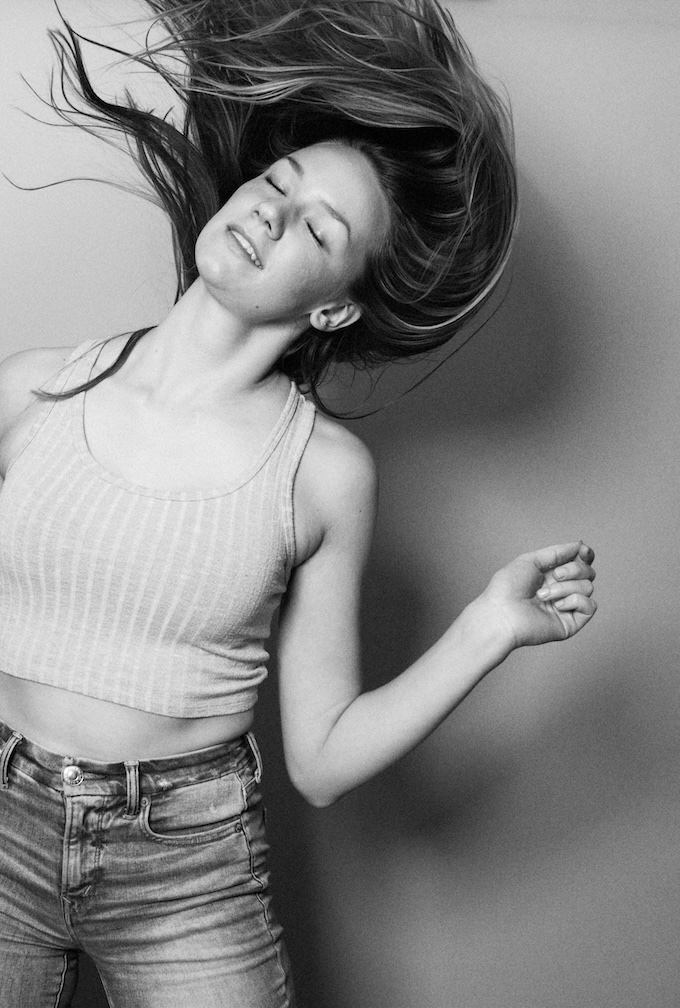Beauty, Glamour + Fashion
How to Harmonize Hues in Creative Portrait Photography
February 24, 2019
Split Complementary, one of the seven color harmony combinations discussed here, are particularly pleasing to the eye. One primary color combined with two colors on either side of its complement on the color wheel creates visual impact without too much contrast.
I’ve always loved bold colors, especially in photography. As a teen, I gathered a hefty collection of ad tear sheets, pulled from all kinds of magazines. My favorites were the ones with statement colors and brave color accents. A visual story led by color always seemed like a great tool to awaken emotions and create a vernacular between a photographer’s work and their audience.
We can instantly recognize color harmony when we spot it around us. Defined simply, it’s composed of a number of colors that work beautifully together and are pleasing to the eye. But when it comes to recreating them, some of us are more intuitive than others. I had to learn to combine colors, and just like anybody else looking to explore color, I turned to the color wheel. Comprising the primary colors (red, blue and yellow) placed at an equal distance, it includes their mixed results (purple, orange and green) and their derivatives. According to the color wheel, there is a number of color harmony approaches we can take: monochromatic, complementary, split complementary, analogous, triadic, tetradic and square.
Monochromatic uses tints of the same color, from the darkest to the lightest shade. My personal favorite color to create monochromatic looks with is red. You can see a lot of red in my work whether it is an accent color or the key color of the image.
When it comes to color combinations, I like to use two primary colors. My favorite choice is blue and red. Whenever I want to make a bold statement, I use these two colors. I like having approximately the same amount of both colors in the photo—it sort of looks like a battle between warm and cool, creating a very nice contrast.
Complementary color combinations are also very well-represented in my work. It is a combination of two opposite colors on the color wheel. When combining two or more colors, the first step is to select your key color—the most important, dominant color, or the color that cannot be changed. For example, if you are in a park, your key color will be green, and it cannot be changed unless you go elsewhere. Above shows my choice of red as a dominant color and green as the complementary match to it.
Split Complementary combinations are particularly useful if complementary color combination create too much contrast for comfort. In this case, you take one primary color and two colors adjacent to its complement. This scheme has the same strong visual impact, but with less tension.
Analogous combinations will create even less contrast than Complementary or Split Complementary. Involving two to five neighboring colors, they provide a smoother transition between cool and warm.
Triadic color schemes use colors that are evenly spread out on the color wheel at three points. This scheme will remain quite vibrant together, even if you use pale hues.
Tetradic color schemes use two pairs of complementary colors. This scheme works best if one color is dominant, as the combination itself is very vibrant.
Square color schemes are similar to tetradic, but they have more contrast since all four colors are spread out evenly on the color wheel. This can be a tricky one; a lack of balance between warm and cool tones in the image can create a cacophony rather than harmony. My tip here would be to assign a dominant color and introduce other colors that root from it (or in the case above, two colors: red and blue).
PRO TIP: HARMONIZE COLORS WITH NEUTRAL TONES
To make any color look richer and more “grounded,” introduce neutral colors to your color schemes. Neutral colors help shift a viewer’s focus to other colors or tone down ones that may be overpowering on their own.
There are cool and warm neutral tones: Cool tones are white, ivory, silver and grey; warm tones are beige, gold, tan, brown and black. I personally prefer cool neutral tones, and grey is definitely my number one choice. It makes vivid colors look deeper and more impactful. That said, when working with a pastel palette, I most likely use white, beige or gold.
RESOURCES
If you are curious to play around with color harmonies:
-
- Paletton is an incredible tool that you can use to plot your palettes.
- The app Color Harmony also has some cool features, like the ability to upload an image to generate corresponding color palettes.
- Lifewire created a comprehensive guide to colors, what they represent and how they make us feel (through the lens of a graphic designer).
Daryna Barykina is a beauty and fashion photographer currently residing in Florida. Clients—Covergirl, Kat Von D and Matrix, among others—seek her out for creative lighting concepts, use of color and high-end retouching. Most recently, she shared three ways for creative people to kick emotional burnout from their minds.
RELATED LINKS
Watch: How to Use Color Theory to Elevate Your Photography
Finding the Right LED Light: What You Need to Know to Get Accurate Color













